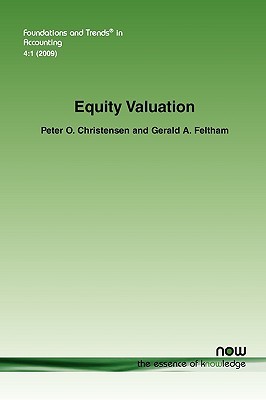
- We will send in 10–14 business days.
- Author: Peter O Christensen
- Publisher: Now Publishers
- ISBN-10: 1601982720
- ISBN-13: 9781601982728
- Format: 15.6 x 23.4 x 0.7 cm, minkšti viršeliai
- Language: English
- SAVE -10% with code: EXTRA
Reviews
Description
Equity Valuation reviews and critically examines the standard approach to equity valuation using a constant risk-adjusted cost of capital and develops a new valuation approach discounting risk-adjusted fundamentals using nominal zero-coupon interest rates. Equity Valuation is organized as follows. Chapter 2 (Risk-adjusted Discount Rates) reviews standard valuation models based on risk-adjusted discount rates. Chapter 3 (Multi-period Asset Pricing Theory and Accounting Relations) examines key results from multi-period asset pricing theory in discrete-time, and shows how equity valuation models can equivalently be based on free cash flows or accrual accounting numbers. Based on these results, the authors derive an accounting-based multi-period equity valuation model presented in Chapter 4 (An Accounting-based Multi-period Equity Valuation Model) with equilibrium risk-adjustments determined by prices of aggregate consumption claims. Chapter 5 (Equity Valuation with HARA Utility) includes a general equilibrium analysis of a setting in which the investors have HARA utility, and aggregate consumption and residual operating income are jointly normally distributed. A set of appendices follows including Appendix B that extends the setting to preferences with external habit formation (which recently has gained popularity in asset pricing theory), and Appendix C, which discusses the relationship between risk-adjusted expected cash flows and certainty equivalents.
EXTRA 10 % discount with code: EXTRA
The promotion ends in 23d.21:11:34
The discount code is valid when purchasing from 10 €. Discounts do not stack.
- Author: Peter O Christensen
- Publisher: Now Publishers
- ISBN-10: 1601982720
- ISBN-13: 9781601982728
- Format: 15.6 x 23.4 x 0.7 cm, minkšti viršeliai
- Language: English English
Equity Valuation reviews and critically examines the standard approach to equity valuation using a constant risk-adjusted cost of capital and develops a new valuation approach discounting risk-adjusted fundamentals using nominal zero-coupon interest rates. Equity Valuation is organized as follows. Chapter 2 (Risk-adjusted Discount Rates) reviews standard valuation models based on risk-adjusted discount rates. Chapter 3 (Multi-period Asset Pricing Theory and Accounting Relations) examines key results from multi-period asset pricing theory in discrete-time, and shows how equity valuation models can equivalently be based on free cash flows or accrual accounting numbers. Based on these results, the authors derive an accounting-based multi-period equity valuation model presented in Chapter 4 (An Accounting-based Multi-period Equity Valuation Model) with equilibrium risk-adjustments determined by prices of aggregate consumption claims. Chapter 5 (Equity Valuation with HARA Utility) includes a general equilibrium analysis of a setting in which the investors have HARA utility, and aggregate consumption and residual operating income are jointly normally distributed. A set of appendices follows including Appendix B that extends the setting to preferences with external habit formation (which recently has gained popularity in asset pricing theory), and Appendix C, which discusses the relationship between risk-adjusted expected cash flows and certainty equivalents.


Reviews